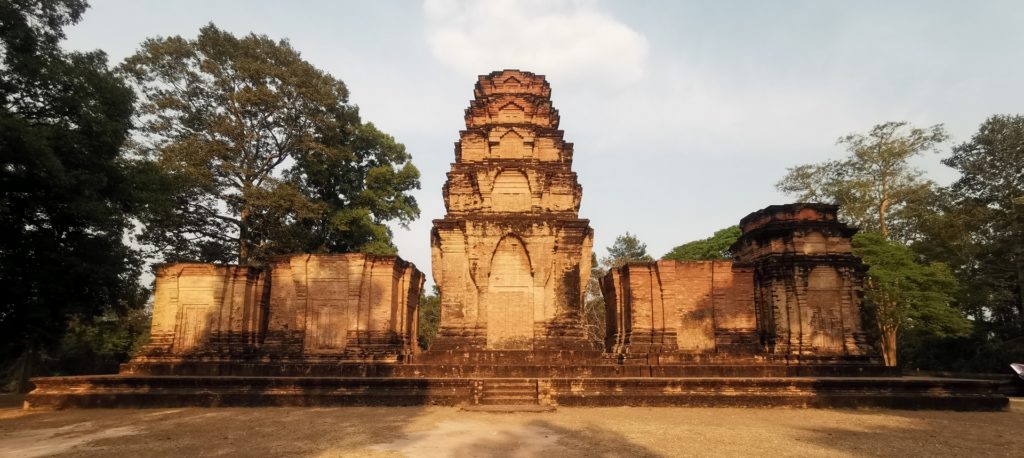Kravan Temple – The temple of Cardamom
Kravan Temple is a small temple complex located in the Angkor Archaeological Park, southeast of the so-called small circuit. Due to its good location (it is only about 3 kilometers east of the entrance to Angkor Wat), the complex is a popular tourist destination and can welcome numerous visitors every year.

Front view of the Kravan Temple
Built in the 10th century, probably under the reign of King Harshavarman I and/or King Isanavarman II, it is the “twin” of Prasat Neang Khmau, which is located in Takeo province, south of Phnom Penh. Architecturally, the buildings can be assigned to the Koh Ker style, which is especially known for its breathtakingly beautiful sculpture and can be found in numerous buildings of the Khmer period (since King Jayavarman IV, under whom the style experienced its peak, was known to use his reign for a real “building boom”, whereby numerous buildings were built at that time and in that style).
Translated, Kravan Temple means the “Temple of Cardamom”, which, according to legend, refers to the fact that in the place where the sanctuary of the temple is located today, there used to be a cardamom tree. The complex is dedicated to the Hindu deity Vishnu, the god of Trimurti, who represents conservation.
In the north-south direction are the five towers of the temple complex. These are only partially preserved. All five structures face east. However, what is special about the towers are primarily the beautiful and well-preserved reliefs that show stories from Hindu mythology, such as of Vishnu and his wife Lakshmi.
The Kravan temple is also such a wonderful place for tourists to visit because it was restored very extensively back in the 1960s and is therefore very accessible. Since the complex as a whole is not particularly large, you do not need to plan too much time for the exploration. It is much more important to understand the temple in the context of its time and perhaps to deal a little with the culture and especially the architectural art of the Khmer in advance, in order to get the most out of the possible cultural experience when visiting the complex.
However, since the site is also approached by many guided tour operators, there is also the possibility to have the buildings and their history professionally explained by expert guides on site, which certainly deepens the experience of the localities